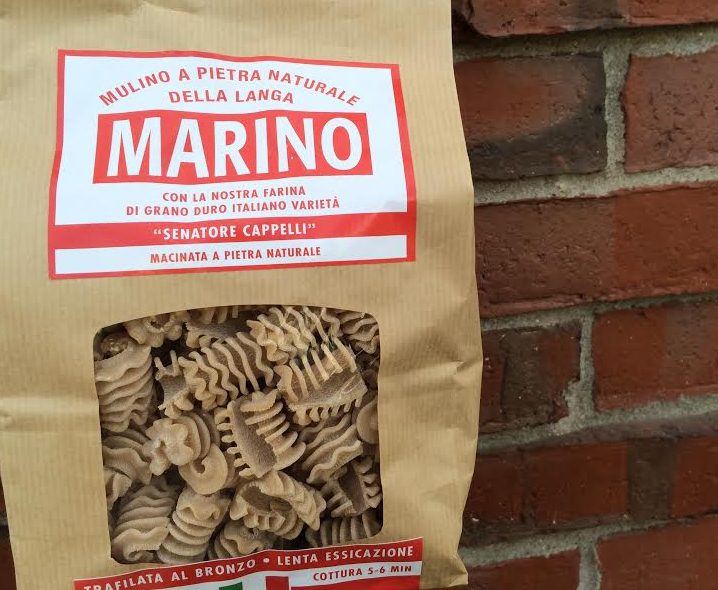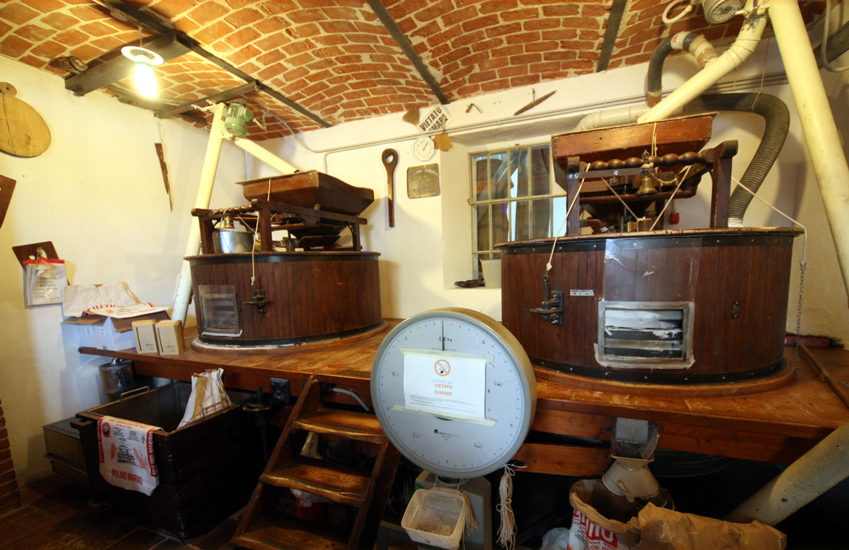When it comes to exceptional flour producers, Mulino Marino tops the list. This family-run mill started in 1959 when Felice Marino learned of a small mill for sale in Cossano Belbo, a town nestled in the rolling hills and vineyards of northern Piedmont, Italy. The mill featured original millstones and rollers, and a fascinated Felice decided to buy it. Working with his wife and parents, the family began producing a range of flours and distributing them to bakers for bread making. Today, Felice's sons Flavio and Ferdinando and grandsons Fulvio and Fausto continue the tradition along with their own families sharing their love of organically grown, Italian flours.
Partnerships and Dried Pasta
Recently, Mulino Marino partnered with a small pastaio (pasta-maker) in Rome to produce pasta made from the Marino family's Senatore Cappelli flour. This wheat has a high protein content and is ideally suited for making bread and pasta. To make this beautiful new pasta, the wheat is stone-ground to maintain as much of its nutritional value as possible. The ridges in the pasta are perfect for catching chunky sauces and gooey cheese. Dinner has never tasted so good!
 Mulino Marino 'Senatore Cappelli' Pasta
Mulino Marino 'Senatore Cappelli' Pasta
The Millstones of Mulino Marino
The natural old Franc millstones of Mulino Marino continue to be used today grinding traditional, organically farmed cereals that have never been hybridized or genetically altered. The family works with three natural stone mills: one for 'Otto File' (eight row) maize from the Langhe that produces the most perfect cornmeal for polenta; one stone for hard and soft grains including their popular buratto flour which is a favorite of famed pizza artisan Gabriele Bonci; and one more stone for low-gluten varieties of wheat such as spelt, enkir, rye, buckwheat, kamut, chickpea, barley, and chestnut.
Senatore Cappelli Wheat
Senatore Cappelli wheat was first established through genealogical selection by Strampelli Nazarene in 1915. The variety was named after a senator from Abruzzo named Raffaele Cappelli who was a supporter of early 20th century agricultural reform in Italy, responsible for (among other things) the distinction between hard and soft wheats. This wheat variety was very popular because it offered a strong yield, was highly adaptable to various growing environments, and was a relatively hardy crop. Senatore Cappelli was the primary wheat variety used in Puglia and Basilicata in the 1930s and 40s. In fact, up until the 1960s, Senatore Cappelli was the wheat grown in roughly 60% of the wheat fields throughout Italy.
After World War II, new varieties of wheat became available because of advances in genetic manipulation and the wide availability of pesticides and fertilizers. Even though the quality was not the same, these new varieties were even more productive, and more importantly, could be harvested earlier. Soon enough, Senatore Cappelli was replaced as the primary wheat grown in Italy. Today, due to a focus on flavor and quality, Senatore Cappelli has once again, become a favorite flour for artisan pasta makers.
Author, Beth Wittenstein is a cheesemonger at Formaggio South End and Online Media Manager for Formaggio Kitchen Cambridge. When she isn’t taking photos of cheese, you can find her making intricate confections in her kitchen.


